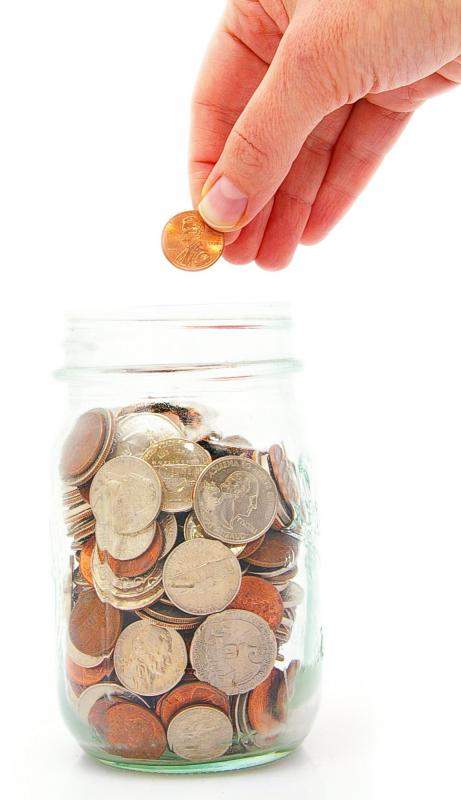At WiseGEEK, we're committed to delivering accurate, trustworthy information. Our expert-authored content is rigorously fact-checked and sourced from credible authorities. Discover how we uphold the highest standards in providing you with reliable knowledge.
What is a Bank Roll?
Bank rolls are the wrappers that are placed around stacks of coins. They are typically made out of paper or plastic, and hold a specific set amount for a particular denomination of coin. Wrappers are either see-through or are pre-printed with the value of the roll, and are often color coded to make identifying the coins faster and easier. Merchants withdraw cash in bank rolls in order to make change for retail sales, and they are also an easy solution for individuals to organize spare change for depositing in a bank account.
The specific denominations and color coding conventions vary from country to country, depending on the monetary system. In the United States, the penny wrapper holds 50 coins and has red stripes. In the European Union, the bank roll for the euro cent also holds 50 coins, but these wrappers are marked with a white stripe.

Paper wrappers are available as flat wrappers or in preformed tubes. Reusable plastic tubes are becoming more popular, particularly in the European Union. Banks will often provide wrappers for free, especially to bank customers, and bulk wrappers can be purchased in office supply stores or online. There are accessories available that make it easier to use wrappers to roll coins, such as holders that allow the user to quickly fill a wrapper to the correct amount without the need for counting. Machines can also be purchased that will sort, count, and wrap the coins.
The most common denominations of coins are usually available in bank rolls, and rolls of less-common denominations can be requested. There are banks that will only accept unwrapped coins, which they then weigh or sort to determine their value, due to the potential for bank roll fraud. Attempts at fraud include filling a bank roll with the wrong amount of coins, with fake or slug coins, or with international coins. To help with tracking deposited coins, tellers will often ask customers to write their name and account number on the paper wrappers.
While the most common use of bank rolls is for stocking cash registers, they are also part of an unusual hobby. Some numismatists, or coin collectors, enjoy acquiring bank rolls to see if they contain any valuable coins. The bank roll is unwrapped to see if there are any rare coins or coins containing copper or silver, which are worth more than the face value of the coin itself. The majority of the coins are then rewrapped and returned. Banks will sometimes discourage coin roll hunting, as the practice takes up time with counting and depositing, without producing any business for the bank.
AS FEATURED ON:
AS FEATURED ON:











Discuss this Article
Post your comments